- Home
- Ursula K. Le Guin
The Unreal and the Real - Vol 2 - Outer Space, Inner Lands
The Unreal and the Real - Vol 2 - Outer Space, Inner Lands Read online
Table of Contents
Introduction
The Ones Who Walk Away from Omelas
Semley’s Necklace
Nine Lives
Mazes
The First Contact With the Gorgonids
The Shobies’ Story
Betrayals
The Matter of Seggri
Solitude
The Wild Girls
The Fliers of Gy
The Silence of the Asonu
The Ascent of the North Face
The Author of the Acacia Seeds
The Wife’s Story
The Rule of Names
Small Change
The Poacher
Sur
She Unnames Them
Record of First Publication
About the Author
The Unreal and the Real
Selected Stories of
Ursula K. Le Guin
Volume Two
Outer Space, Inner Lands
Small Beer Press
Easthampton, MA
This is a work of fiction. All characters and events portrayed in this book are either fictitious or used fictitiously.
The Unreal and the Real: Selected Stories of Ursula K. Le Guin Volume 2: Outer Space, Inner Lands
Copyright © 2012 by Ursula K. Le Guin
(ursulakleguin.com).
All rights reserved.
Page 335–338 of the printed edition function as an extension of the copyright page.
Cover design © 2012 by John D. Berry (johndberry.com).
Cover art: “Golden Apple Tree” © 2010 by Paul Roden & Valerie Lueth
(tugboatprintshop.com).
Small Beer Press
150 Pleasant Street #306
Easthampton, MA 01027
www.smallbeerpress.com
www.weightlessbooks.com
[email protected]
Distributed to the trade by Consortium.
First Edition 1 2 3 4 5 6 7 8 9 0
Library of Congress Cataloging-in-Publication Data
Le Guin, Ursula K., 1929-
[Short stories. Selections.]
The unreal and the real: selected stories of Ursula K. Le Guin. -- First edition.
volumes cm
ISBN 978-1-61873-034-3 (v. 1: cloth)
ISBN 978-1-61873-035-0 (v. 2: cloth)
ISBN 978-1-61873-036-7 (v. 1: ebook)
ISBN 978-1-61873-037-4 (v. 2: ebook)
1. Science fiction, American. 2. Fantasy fiction, American. I. Title.
PS3562.E42A6 2012
813’.54--dc23
2012036206
The Unreal and the Real: Selected Stories Volume One: Where on Earth
isbn: 978-1-61873-034-3 (trade cloth); 978-1-61873-036-7 (ebook)
The Unreal and the Real: Selected Stories Volume Two: Outer Space, Inner Lands
isbn: 978-1-61873-035-0 (trade cloth); 978-1-61873-037-4 (ebook)
Text set in Centaur.
Paper edition printed on 50# Natures Natural 30% PCR Recycled Paper in the USA.
Introduction
The Obligatory Bit about Science Fiction, Fantasy, and Genre
There are dozens of definitions of what “science fiction” is; few are useful and none is definitive. Variations on the term, such as “speculative fiction,” complicate the discussion more than they clarify it.
Nobody—for good reason—has ever been able to say exactly where “fantasy” begins and ends. It is immensely larger than the current commercial category of books labelled Fantasy. It cannot be limited to “the impossible,” or “magic,” or “the supernatural.” The origins of fantastic literature are lost to sight, because it is worldwide, and if myth and legend are included in it, it long predates history and literacy. It’s permanent, it thrives, because it’s infinitely adaptable. Magic realism was a brilliant modern use of fantasy to record a reality not accessible to the techniques of realism. Science fiction can be seen as a brilliant modern development of fantasy to use the imagination within the parameters of the rationally possible, or at least the plausible.
Genre, a concept which could have served as a useful distinction of various kinds of fiction, has been degraded into a disguise for mere value-judgment. The various “genres” are now mainly commercial product-labels to make life easy for lazy readers, lazy critics, and the Sales Departments of publishers.
It’s not my job as a writer to make life easy for anybody. Including myself.
Three stories from my 1996 story collection Unlocking the Air are in the first volume of this collection. On my web site you can find a table of contents for that book. You want genre? I’ll give you genre. I described each story, not in such crude, vague terms as “realism” or “fantasy,” but accurately: Miniaturized Realism, Geriatric Realism, Californian Realism, Oregonian Realism, and Uncompromising Realism; Surrealism; Mythological Fantasy, Temporal Fantasy, Vegetable Fantasy, Visionary Fantasy, Revisionary Fantasy, Real Fantasy…You won’t find any of the various subgenres of Science Fiction (Hard, Soft, Crunchy, Peanut-Free, Social, Slipstream, etc.), however, because Unlocking the Air doesn’t include any science fiction at all.
The Stories in this Volume
For a writer, there is a genuine difference between fantasy and science fiction, which has nothing to do with the commercial branding of books as “genre” or the categorical imperatives of critics. The difference is in how you write it—what you are doing as a writer. In fantasy you get to make it all up, even the rules of how things work, and then follow your rules absolutely. In science fiction you get to make it up, but you have to follow most of the rules of science, or at least not ignore them.
Nine of the stories in this second volume are what I’d call science fiction, partly because they use familiar tropes—imaginary other planets reached by human beings in space ships, or imaginary other planets inhabited by human-like species, or Space Aliens visiting Earth—and also because they make some effort not to violate physical possibility, though stretching scientific ideas much farther than a scientist would.
“Semley’s Necklace” has a good many elements of myth (Norse) and fantasy mixed into the space-ship-alien-planet business. I think this mixture is now called science fantasy, but I only did it because I didn’t know any better yet. By the time I wrote “Nine Lives” I had a clearer idea of what I wanted to do with science fiction and how to do it.
“Mazes” does something I find myself doing fairly often: it speaks from the point of view of someone who has traditionally not been allowed a point of view at all.
As a matter of fact, so does “The First Contact with the Gorgonids,” a story that Harlan Ellison asked me to write, but then he didn’t like it, so I sold it to somebody else for a whole lot more money, but he and I have long since forgiven each other; we always do.
“The Shobies’ Story” is part of a semi-suite of stories in the collection A Fisherman of the Inland Sea. It’s essentially a story about what stories do, or can do. Bringing people together on a space ship from several of my “Hainish” worlds of earlier books and stories gave me a good deal of pleasure.
“Betrayals” is from the book Four Ways to Forgiveness, which (with a later, fifth story, “Old Music and the Slave Women”) is about a great slave uprising on the planets Werel and O. Sometimes a character comes into my mind with a story to tell. I learned that if I listen, carefully, with some patience, and write what I’m told, the story will come to be. As I grew older, more and more stories have been given me in that way, as gifts.
But not all. “The Matter of Seggri” started very differently,
with my own questions. A scientific question, not yet fully and satisfactorily answered: When a few males would serve to procreate a species, why are there so many? And a social question, not yet answered adequately at all: Why, in almost all societies, do men dominate women? What’s the Darwinian profit in having equal numbers of the two genders but making them unequal in power? What if the situation were reversed?…A lot of science fiction starts out that way.
“Solitude” was written because I wanted to write about an introvert who finds a good place for introverts to live. Clearly it had to be on another world, because the World As We Know It is filled almost solid with extraverts, who refuse to learn how to spell “extravert” because they’re too busy rushing around in crowds shouting and cellphoning and texting and friending and joining groups and being outgoing and sociable to pay any attention to stuff like Latin prefixes, or silence, or introverts.
“The Wild Girls” is science fiction in that the caste system it depicts is modelled on historical observations of certain societies of the Mississippi Valley peoples. It’s one of the last stories I wrote, and a dark one.
“The Fliers of Gy” and “The Silence of the Asonu” come from Changing Planes, in which travel to other worlds is accomplished not on space ships, but by sitting too long in airports. Does space travel fueled by enforced misery and boredom rate as science fiction? Anyhow, the stories are less science-fictional or fantastic than satirical in intent.
If you’re getting bored with this classifying, I’m sorry—I’m doing it to show that the whole vocabulary—“realism” “science fiction,” “genre fiction,” and the rest of it—doesn’t give even a remotely adequate description of what I write. Or of what many other serious writers are writing. We need a whole new discourse on fiction.
Fantasy is still a valid term, if used carefully. “The Poacher” is pure fantasy: a riff on the folk tale of The Sleeping Beauty. “The Rule of Names” is also a fantasy, an early voyage to Earthsea. (I excluded stories closely associated with novels, but this one’s here because my editors wanted it, and how could I say no to Ursula’s mother and father?) “Small Change” and “The Wife’s Story” belong, I suppose, to the subgenres of ghost story, sort of, and werewolf story, sort of, only backwards.
“Omelas” (which is pronounced OH-meh-lahss) is a fable, I think. Its premise was stolen from the philosopher William James. You can find it also in Dostoevsky’s The Brothers Karamazov, being told by the Grand Inquisitor, with a somewhat different purpose. My version of it has had a long and happy career of being used by teachers to upset students and make them argue fiercely about morality.
The first draft of “She Unnames Them” was written down on a cocktail napkin during a bourbon on the rocks on an airplane flying home alone from New York to Oregon after getting an award. I was feeling good. I was feeling like rewriting the Bible. That story and “Sur” are probably my favorites in this volume, which is why I put them last.
I leave it entirely up you, O Reader, to decide which volume of these two is the Real and which is the Unreal. I believe the science of deciding such questions is called Ontology, but I never learned it. I am strictly an amateur. I don’t know anything about reality, but I know what I like.
—Ursula K. Le Guin. August 2012.
The Ones Who Walk Away from Omelas
(Variations on a theme by William James)
With a clamor of bells that set the swallows soaring, the Festival of Summer came to the city Omelas, bright-towered by the sea. The rigging of the boats in harbor sparkled with flags. In the streets between houses with red roofs and painted walls, between old moss-grown gardens and under avenues of trees, past great parks and public buildings, processions moved. Some were decorous: old people in long stiff robes of mauve and grey, grave master workmen, quiet, merry women carrying their babies and chatting as they walked. In other streets the music beat faster, a shimmering of gong and tambourine, and the people went dancing, the procession was a dance. Children dodged in and out, their high calls rising like the swallows’ crossing flights over the music and the singing. All the processions wound towards the north side of the city, where on the great water-meadow called the Green Fields boys and girls, naked in the bright air, with mud-stained feet and ankles and long, lithe arms, exercised their restive horses before the race. The horses wore no gear at all but a halter without bit. Their manes were braided with streamers of silver, gold, and green. They flared their nostrils and pranced and boasted to one another; they were vastly excited, the horse being the only animal who has adopted our ceremonies as his own. Far off to the north and west the mountains stood up half encircling Omelas on her bay. The air of morning was so clear that the snow still crowning the Eighteen Peaks burned with white-gold fire across the miles of sunlit air, under the dark blue of the sky. There was just enough wind to make the banners that marked the racecourse snap and flutter now and then. In the silence of the broad green meadows one could hear the music winding through the city streets, farther and nearer and ever approaching, a cheerful faint sweetness of the air that from time to time trembled and gathered together and broke out into the great joyous clanging of the bells.
Joyous! How is one to tell about joy? How describe the citizens of Omelas?
They were not simple folk, you see, though they were happy. But we do not say the words of cheer much any more. All smiles have become archaic. Given a description such as this one tends to make certain assumptions. Given a description such as this one tends to look next for the King, mounted on a splendid stallion and surrounded by his noble knights, or perhaps in a golden litter borne by a great-muscled slave. But there was no king. They did not use swords, or keep slaves. They were not barbarians. I do not know the rules and laws of their society, but I suspect that they were singularly few. As they did without monarchy and slavery, so they also got on without the stock exchange, the advertisement, the secret police, and the bomb. Yet I repeat that these were not simple folk, not dulcet shepherds, noble savages, bland utopians. They were not less complex than us. The trouble is that we have a bad habit, encouraged by pedants and sophisticates, of considering happiness as something rather stupid. Only pain is intellectual, only evil interesting. This is the treason of the artist: a refusal to admit the banality of evil and the terrible boredom of pain. If you can’t lick ’em, join ’em. If it hurts, repeat it. But to praise despair is to condemn delight, to embrace violence is to lose hold of everything else. We have almost lost hold; we can no longer describe a happy man, nor make any celebration of joy. How can I tell you about the people of Omelas? They were not naïve and happy children—though their children were, in fact, happy. They were mature, intelligent, passionate adults whose lives were not wretched. O miracle! but I wish I could describe it better. I wish I could convince you. Omelas sounds in my words like a city in a fairy tale, long ago and far away, once upon a time. Perhaps it would be best if you imagined it as your own fancy bids, assuming it will rise to the occasion, for certainly I cannot suit you all. For instance, how about technology? I think that there would be no cars or helicopters in and above the streets; this follows from the fact that the people of Omelas are happy people. Happiness is based on a just discrimination of what is necessary, what is neither necessary nor destructive, and what is destructive. In the middle category, however—that of the unnecessary but undestructive, that of comfort, luxury, exuberance, etc.—they could perfectly well have central heating, subway trains, washing machines, and all kinds of marvelous devices not yet invented here, floating light-sources, fuelless power, a cure for the common cold. Or they could have none of that: it doesn’t matter. As you like it. I incline to think that people from towns up and down the coast have been coming in to Omelas during the last days before the Festival on very fast little trains and double-decked trams, and that the train station of Omelas is actually the handsomest building in town, though plainer than the magnificent Farmers’ Market. But even granted trains, I fear that Omelas so far strikes some
of you as goody-goody. Smiles, bells, parades, horses, bleh. If so, please add an orgy. If an orgy would help, don’t hesitate. Let us not, however, have temples from which issue beautiful nude priests and priestesses already half in ecstasy and ready to copulate with any man or woman, lover or stranger, who desires union with the deep godhead of the blood, although that was my first idea. But really it would be better not to have temples in Omelas—at least, not manned temples. Religion yes, clergy no. Surely the beautiful nudes can just wander about, offering themselves like divine soufflés to the hunger of the needy and the rapture of the flesh. Let them join the processions. Let tambourines be struck above the copulations, and the glory of desire be proclaimed upon the gongs, and (a not unimportant point) let the offspring of these delightful rituals be beloved and looked after by all. One thing I know there is none of in Omelas is guilt. But what else should there be? I thought at first there were no drugs, but that is puritanical. For those who like it, the faint insistent sweetness of drooz may perfume the ways of the city, drooz which first brings a great lightness and brilliance to the mind and limbs, and then after some hours a dreamy langour, and wonderful visions at last of the very arcana and inmost secrets of the Universe, as well as exciting the pleasure of sex beyond all belief; and it is not habit-forming. For more modest tastes I think there ought to be beer. What else, what else belongs in the joyous city? The sense of victory, surely, the celebration of courage. But as we did without clergy, let us do without soldiers. The joy built upon successful slaughter is not the right kind of joy; it will not do; it is fearful and it is trivial. A boundless and generous contentment, a magnanimous triumph felt not against some outer enemy but in communion with the finest and fairest in the souls of all men everywhere and the splendor of the world’s summer: this is what swells the hearts of the people of Omelas, and the victory they celebrate is that of life. I really don’t think many of them need to take drooz.

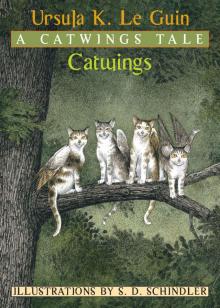 Catwings
Catwings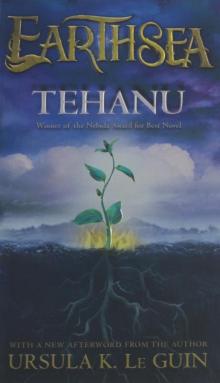 Tehanu
Tehanu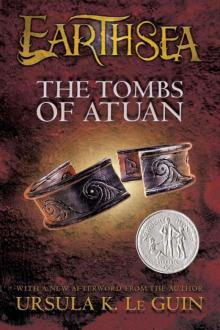 The Tombs of Atuan
The Tombs of Atuan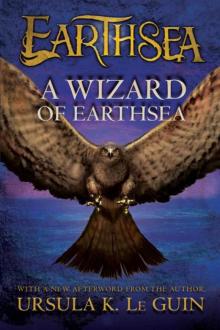 A Wizard of Earthsea
A Wizard of Earthsea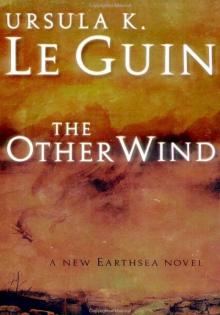 The Other Wind
The Other Wind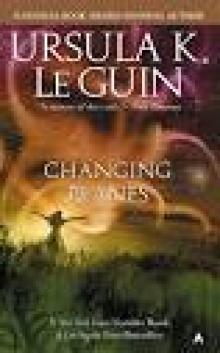 Ursula K. Le Guin
Ursula K. Le Guin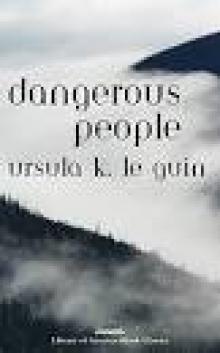 Dangerous People
Dangerous People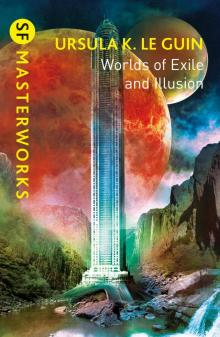 Worlds of Exile and Illusion: Rocannon's World, Planet of Exile, City of Illusions
Worlds of Exile and Illusion: Rocannon's World, Planet of Exile, City of Illusions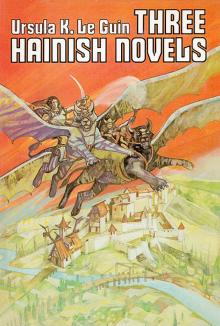 Three Hainish Novels
Three Hainish Novels The Left Hand Of Darkness (SF Masterworks)
The Left Hand Of Darkness (SF Masterworks) The Unreal and the Real - Vol 1 - Where On Earth
The Unreal and the Real - Vol 1 - Where On Earth The Visionary
The Visionary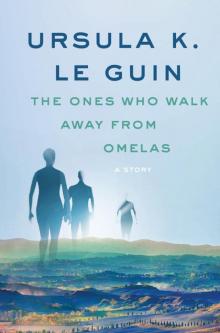 The Ones Who Walk Away from Omelas
The Ones Who Walk Away from Omelas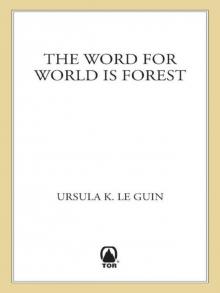 The Word for World is Forest
The Word for World is Forest Always Coming Home
Always Coming Home The Unreal and the Real - Vol 2 - Outer Space, Inner Lands
The Unreal and the Real - Vol 2 - Outer Space, Inner Lands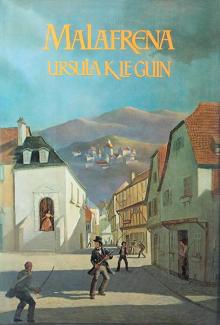 Malafrena
Malafrena The Lathe of Heaven
The Lathe of Heaven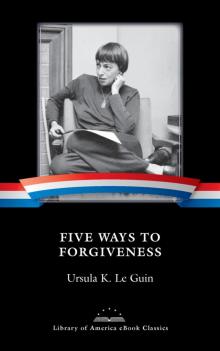 Five Ways to Forgiveness
Five Ways to Forgiveness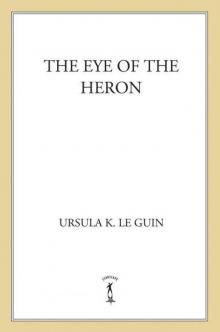 The Eye of the Heron
The Eye of the Heron Four Ways to Forgiveness
Four Ways to Forgiveness Powers
Powers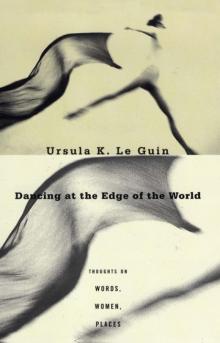 Dancing at the Edge of the World
Dancing at the Edge of the World Very Far Away from Anywhere Else
Very Far Away from Anywhere Else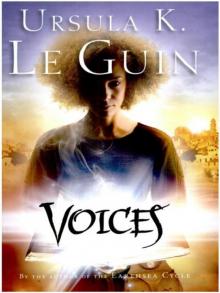 Voices aotws-2
Voices aotws-2 The New Atlantis
The New Atlantis The Unreal and the Real, Selected Stories of Ursula K. Le Guin Volume 1: Where on Earth
The Unreal and the Real, Selected Stories of Ursula K. Le Guin Volume 1: Where on Earth The Telling
The Telling Tehanu (Earthsea Cycle)
Tehanu (Earthsea Cycle)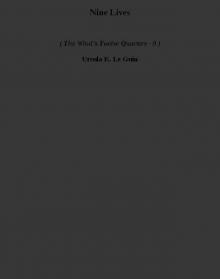 Nine Lives twtq-9
Nine Lives twtq-9 The Birthday of the World and Other Stories
The Birthday of the World and Other Stories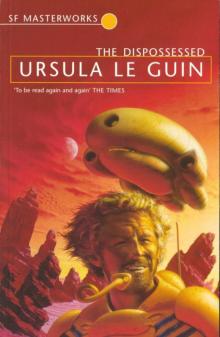 The Dispossessed
The Dispossessed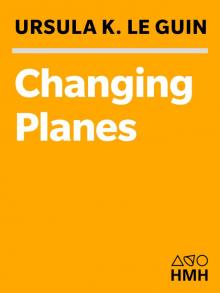 Changing Planes
Changing Planes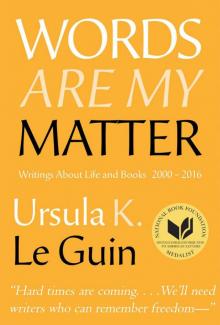 Words Are My Matter
Words Are My Matter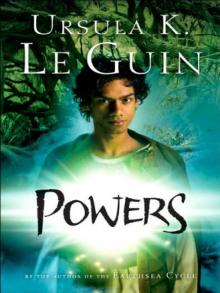 Powers aotws-3
Powers aotws-3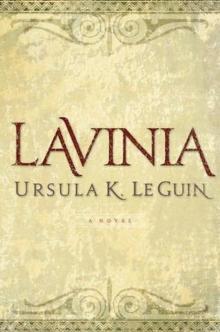 Lavinia
Lavinia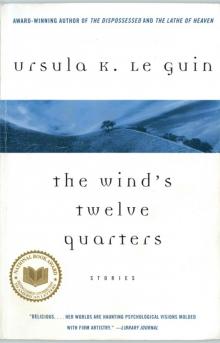 The Wind's Twelve Quarters
The Wind's Twelve Quarters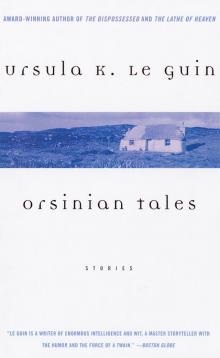 Orsinian Tales
Orsinian Tales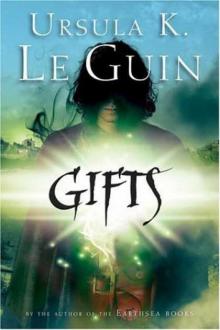 Gifts aotws-1
Gifts aotws-1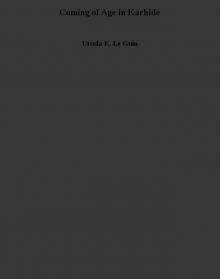 Coming of Age in Karhide
Coming of Age in Karhide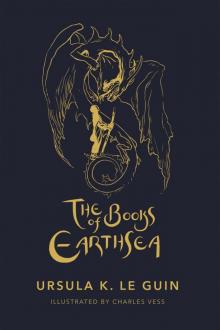 The Books of Earthsea: The Complete Illustrated Edition
The Books of Earthsea: The Complete Illustrated Edition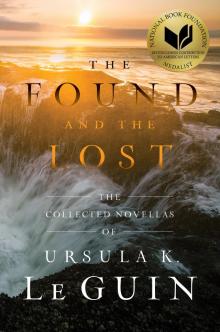 The Found and the Lost
The Found and the Lost No Time to Spare
No Time to Spare Voices
Voices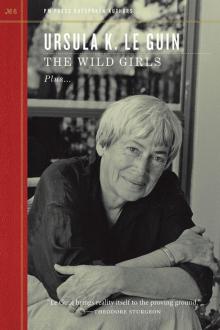 The Wild Girls
The Wild Girls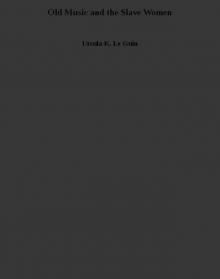 Old Music and the Slave Women
Old Music and the Slave Women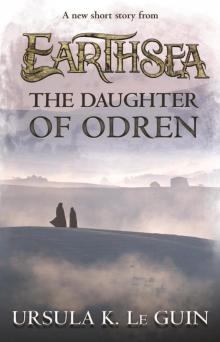 The Daughter of Odren
The Daughter of Odren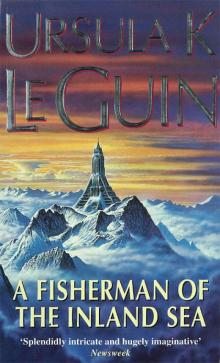 A Fisherman of the Inland Sea: Stories
A Fisherman of the Inland Sea: Stories A Wizard of Earthsea (The Earthsea Cycle)
A Wizard of Earthsea (The Earthsea Cycle)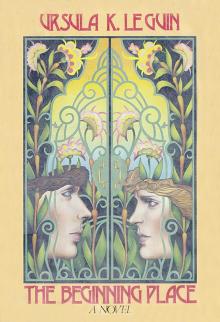 The Beginning Place
The Beginning Place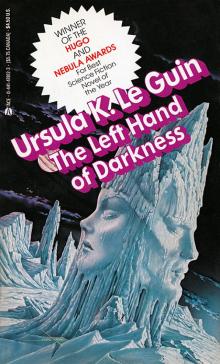 The Left Hand of Darkness
The Left Hand of Darkness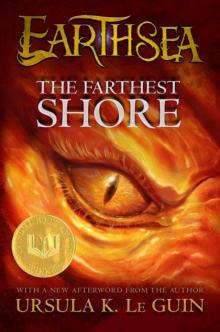 The Farthest Shore (Earthsea Cycle)
The Farthest Shore (Earthsea Cycle) The Matter of Seggri botw-2
The Matter of Seggri botw-2